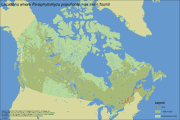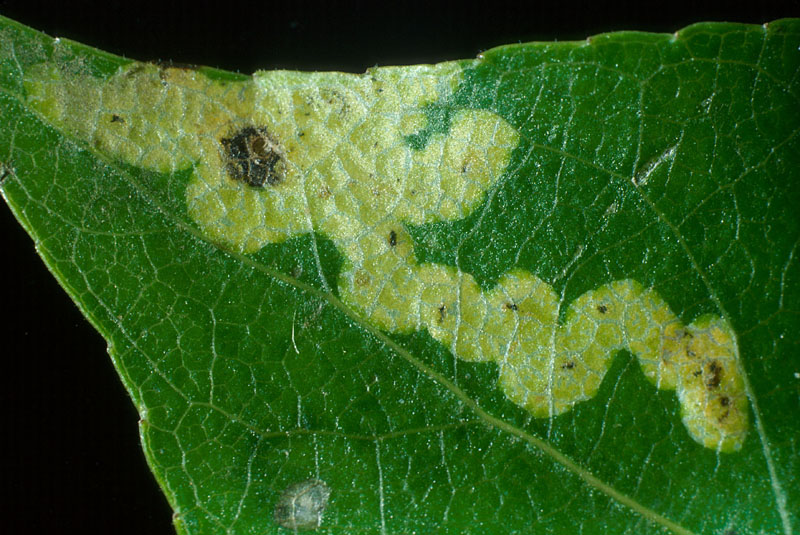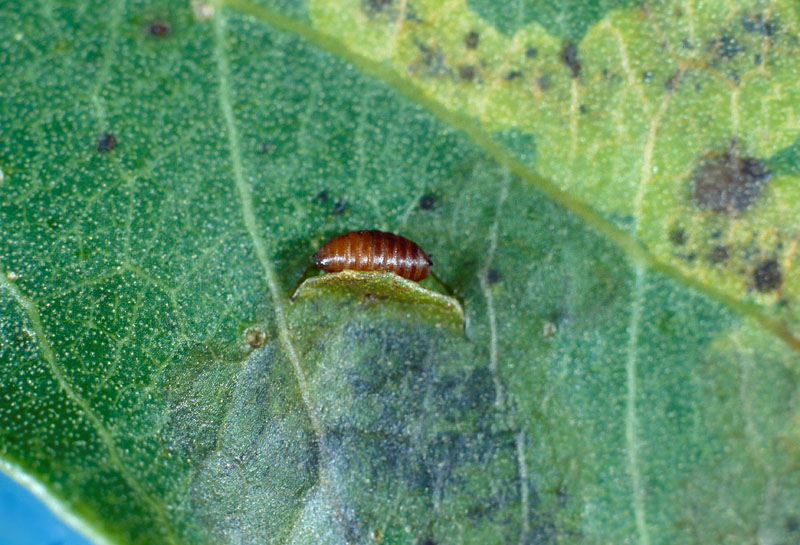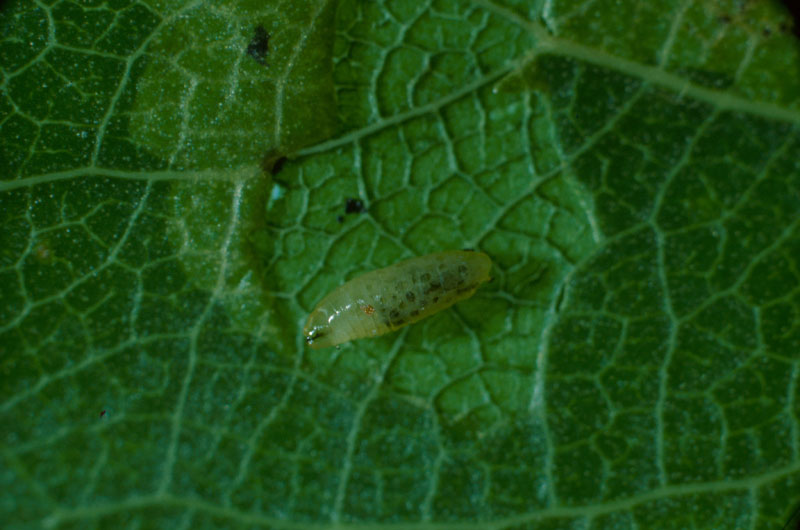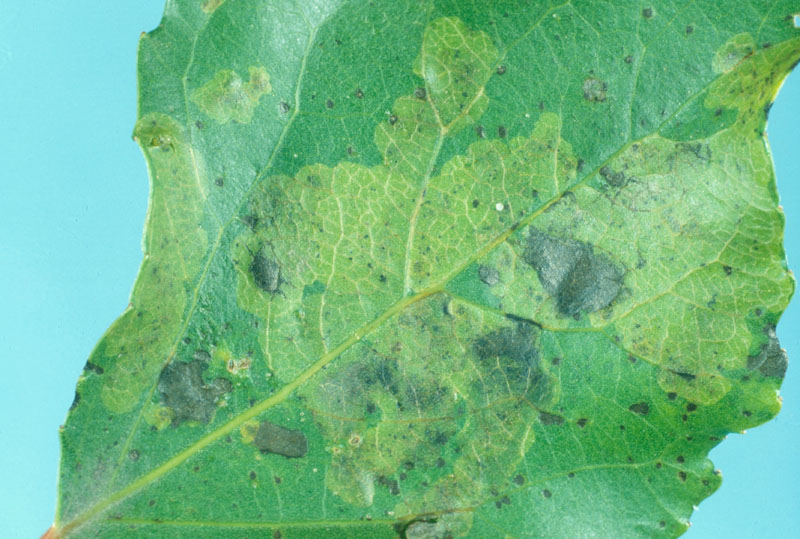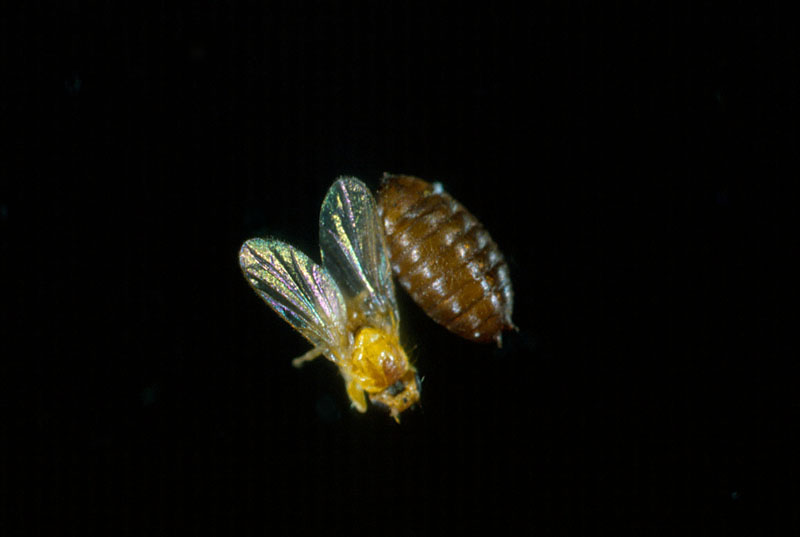Lombardy leafminer

- Order: Diptera
- Family: Agromyzidae
- Latin: Paraphytomyza populicola (Walker)
- English: Lombardy leafminer
- French: Agromyze pâle du peuplier
- Synonym(s): Phytagromyza populicola (Hal.)
Description
Distribution
New Brunswick, Nova Scotia, Ontario, Quebec
Diet and feeding behavior
Phytophagous / Phyllophagous / Miner
Micro-habitat(s)
Leaf
Damage, symptoms and biology
Small mines on the upper surface of the leaves are evidence of the presence of Lombardy leafminer. The larvae produce mines by feeding on the parenchymal cells of the leaves. As the larvae mature, the mines expand and the affected leaves turns light green. The damage caused by this insect does not affect tree survival.
The larvae are active from June to October. When fully grown, they vacate the mine by cutting a semi-circular slit in the mined leaf. They transform into a small oval pupae either in the opening made at the end of the larval gallery or at the surface of the leaf. The pupae, which often remain suspended to the leaf until fall, drop to the ground, where they generally overwinter. They transform into adults the following spring.
Comments
Native to Europe, the Lombardy leafminer was first reported in Canada in 1956 on Lombardy poplars in Quebec City. It has subsequently been reported in southern Ontario and several parts of Quebec. The insect appears to be well established in eastern Canada.
No control measures are warranted since the damage generally occurs near the end of the growing season.
Information on host(s)
Main Host(s)
Lombardy poplar, eastern cottonwood, trembling aspen
